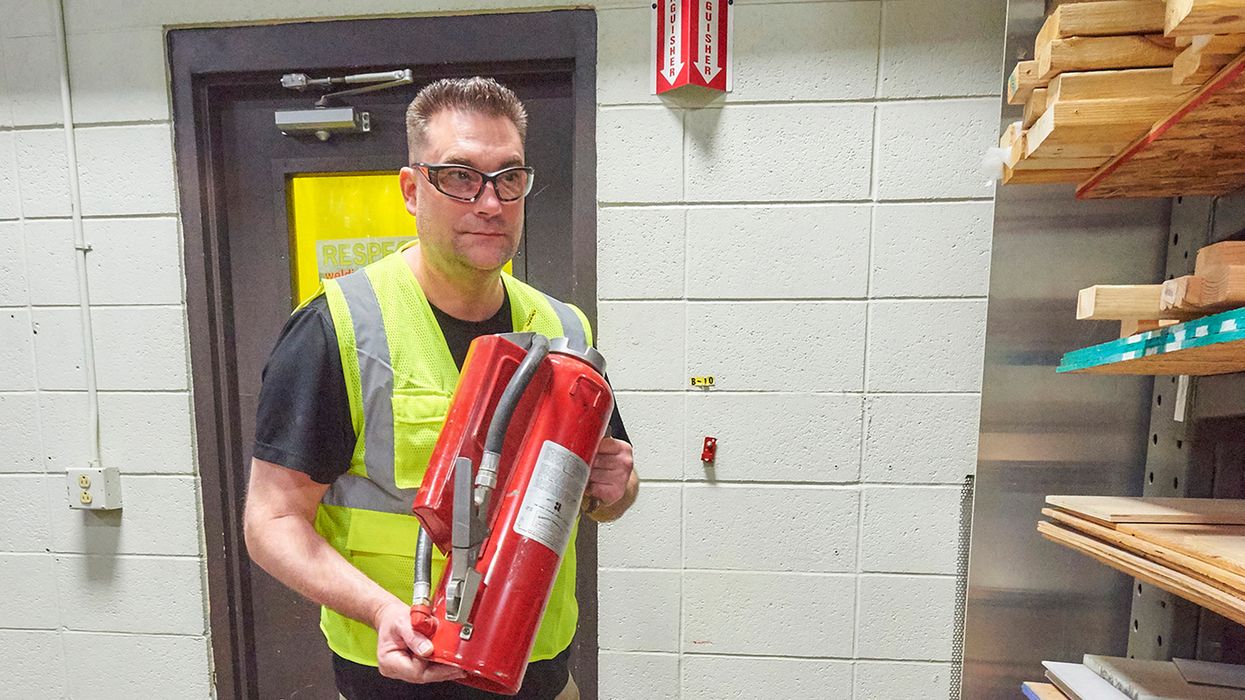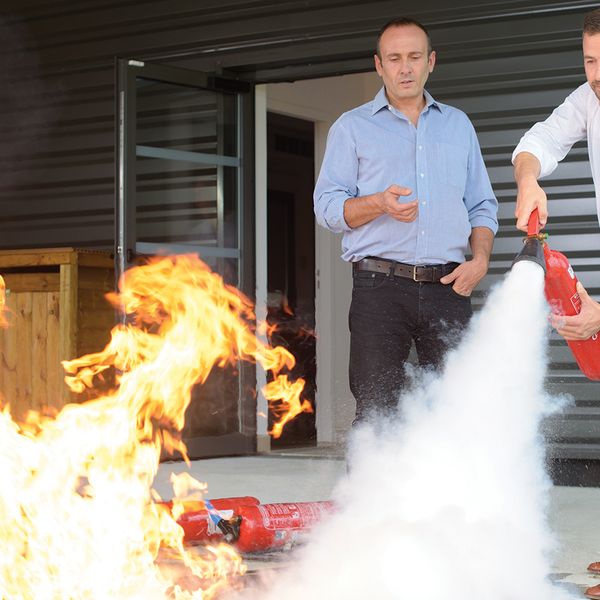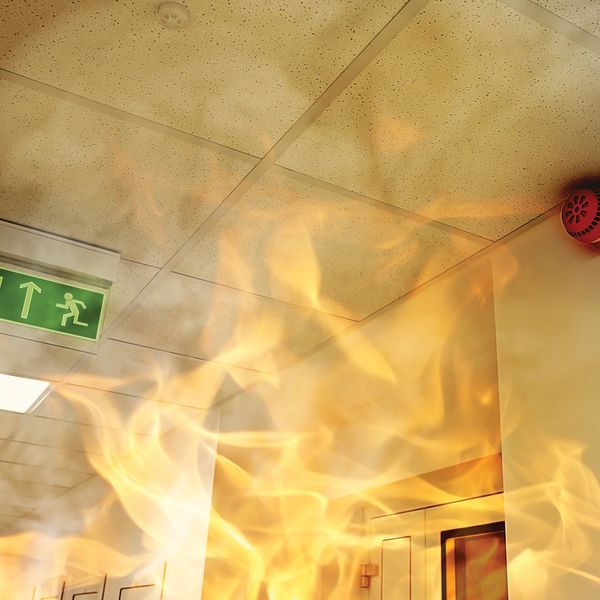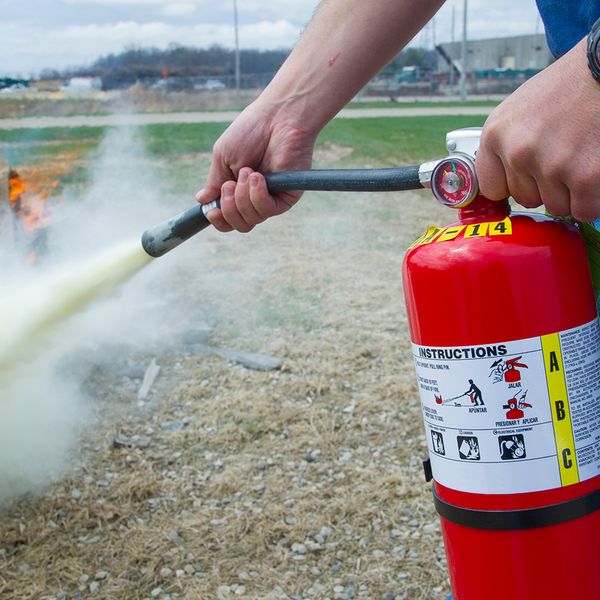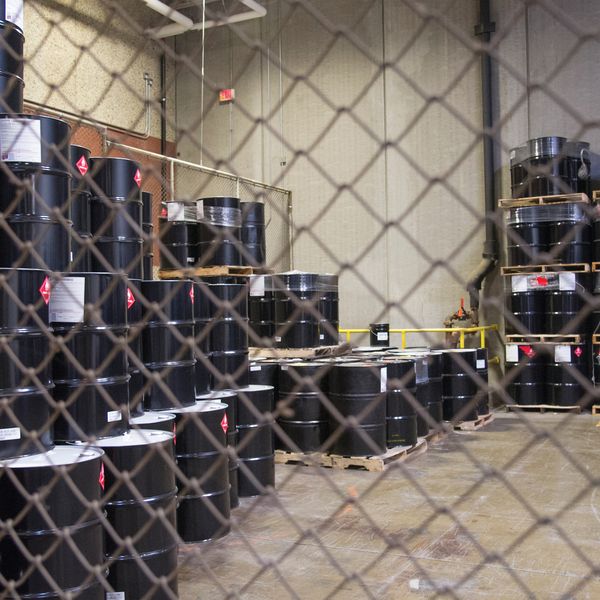Fight or flee: A hot topic for employers to consider
The decision for an employer to authorize workers to fight a fire is a challenge when considering the potential risk of major injury or even death. Choosing to evacuate the workplace rather than providing fire extinguishers for employee use is the most effective means to minimize fire-related injuries or fatalities. However, this does not mean evacuation is always the most appropriate option.
There may be some situations where an employer would want to authorize employees to attempt to fight a small fire. If used properly, fire extinguishers can save both lives and property.
What are my options as an employer?
The big question is should you allow your employees to fight fires or just plan to fully evacuate in a fire emergency? The employer has three choices to consider, but depending on the choice there are some differences in the approach and regulatory requirements from OSHA:
- No employees are authorized to use portable fire extinguishers and all employees evacuate the workplace immediately when the alarm sounds;
- Only designated individuals are authorized to use portable fire extinguishers, while all other employees evacuate; or
- All employees are authorized to use portable fire extinguishers to fight fires.
Once an organization decides on the route they want to go, the decision should be included in the emergency action plan (29 CFR 1910.38) and all employees should be trained on the appropriate response
What are the training requirements if I authorize fire extinguisher use?
If employers choose to authorize the use of portable fire extinguishers to fight a fire and not flee for all or some designated employees, there are certain training requirements in 29 CFR 1910.157 that an employer must comply with.
According to the portable fire extinguisher standard, employers must train employees upon initial job assignment and at least annually on the following minimum objectives:
- Identify and assess the hazards associated with incipient-stage firefighting,
- Explain the limitations and functionality of the extinguishers, and
- Familiarize employees with fire extinguisher principles and proper use.
How do employees know if they should extinguish a fire?
In the moment, when an employee is deciding to fight a fire, the following questions should be asked:
- Is the fire still small or in the incipient stage?
- Is the air safe to breathe?
- Is the environment too hot or smoky?
- Is there a safe way to evacuate if the fire gets out of control?
The answers to these questions will determine whether the employee, regardless of being authorized to use an extinguisher or not, should flee immediately or continue to try and extinguish the fire.
How do employees effectively use a fire extinguisher if they choose to?
Employees authorized to use portable fire extinguishers should follow certain steps to ensure a safe and effective response to incipient-stage fires:
- Sound the alarm: Activate the fire alarm and, if necessary, call the fire department.
- Identify evacuation route: Determine a safe evacuation route before approaching the fire, ensuring that fire, heat, or smoke do not block the route.
- Select the right kind of extinguisher: Depending on the source materials involved, different types of extinguishers are available:
- A – Combustible materials like paper, cloth, wood
- B – Flammable liquids, gases, greases
- C – Electrical equipment, wiring, machinery
- D – Combustible metals
- K – Kitchen or cooking oils, fats
- Use the P.A.S.S. technique: Pull, Aim, Squeeze, Sweep.
- Back away safely: Step back from the extinguished fire to avoid potential flare-ups.
- Evacuate if necessary: If the extinguisher is empty or the fire is still going, evacuate immediately.
Key to remember: The decision to allow employees to fight fires in the workplace involves careful consideration of several factors, is the fire still safely extinguishable, training requirements, and the limitations of the equipment and workers.

